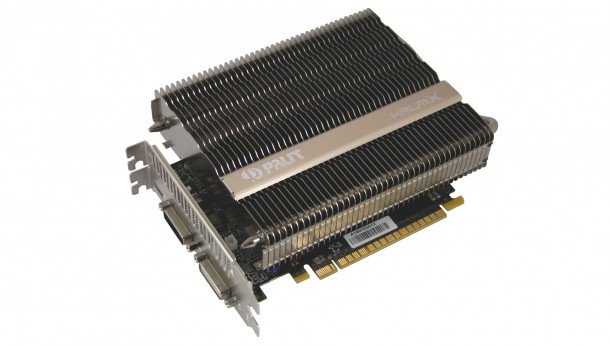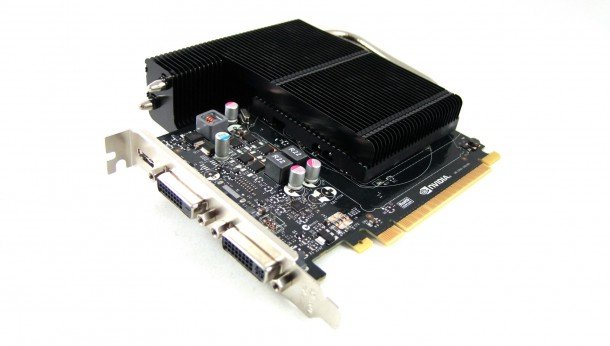Palit's GTX 750 Ti employs passive cooling for quiet, low-power performance

Graphics card manufacturers, Palit, must be fans of PC Gamer as they've obviously seen my jury-rigged, passively-cooled GTX 750 Ti from April and surely been inspired to create their own.
Hubris aside, the Palit GTX 750 Ti KalmX has taken the standard reference design from Nvidia and strapped a hefty heatsink atop the GPU. Not only that but the copper base also covers the power components. Because they've followed the reference design, the GTX 750 Ti KalmX doesn't require any external PCIe power connectors to run in your machine. That makes it a great choice for a small form factor, living room machine, combining a small footprint, low power requirements and completely silent operation.
They haven't messed around with the clockspeeds either. The base clock follows the reference card's 1,020MHz with a Turbo of 1,085MHz. In some instances the KalmX was actually topping 1,110MHz, but with a default temperature target of 80ºC I found the GPU slipping back down to the base clockspeeds during play.
That drop in clockspeed doesn't really affect the gaming performance much, if at all, and in a small form factor machine I'd rather sacrifice a few frames per second to be free from the roar of a graphics card's turbine.

I'm a big fan of this unobtrusive graphics card, and it really highlights just how impressive a GPU architecture Maxwell is. That's why I'm frustrated we haven't seen a 20nm GTX 880 running a high-end Maxwell GPU.
Higher-end Maxwell parts from Nvidia should arrive towards the Autumn/Fall time, featuring the GM204 GPU, but as yet we still don't know if that's going to be a lower-powered 20nm GPU or if Nvidia are sticking with the more power-hungry, ageing 28nm production process.
The biggest gaming news, reviews and hardware deals
Keep up to date with the most important stories and the best deals, as picked by the PC Gamer team.

Dave has been gaming since the days of Zaxxon and Lady Bug on the Colecovision, and code books for the Commodore Vic 20 (Death Race 2000!). He built his first gaming PC at the tender age of 16, and finally finished bug-fixing the Cyrix-based system around a year later. When he dropped it out of the window. He first started writing for Official PlayStation Magazine and Xbox World many decades ago, then moved onto PC Format full-time, then PC Gamer, TechRadar, and T3 among others. Now he's back, writing about the nightmarish graphics card market, CPUs with more cores than sense, gaming laptops hotter than the sun, and SSDs more capacious than a Cybertruck.

